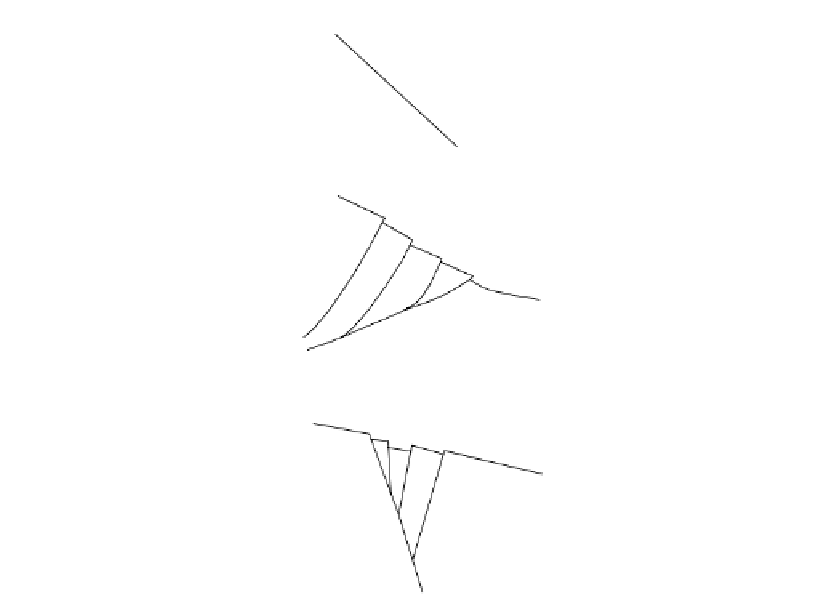Environmental Engineering Reference
In-Depth Information
(a)
STRIKE - SLIP FAULT
PLAN VIEW
f
ault usually
near vertical
often badly
shattered
main fault
break
upthrow
block
(b)
THRUST FAULT
SECTION
little or no
distortion
tension
distortion
original
ground
little distortion
drop in ground
(c)
NORMAL FAULT
SECTION
main fault
Figure 12.1.
Schematic diagram of the types of fault and the effects on the ground nearby (adapted from
Sherard et al., 1974).
epicentral distance
earth surface
epicentre
project site
focal
depth
focus
fault
Figure 12.2.
Definition of earthquake terms.
The amplitude, duration and frequency content of earthquake ground motion at a site
depend on many factors, including the magnitude of the earthquake, the distance from the
earthquake to the site and local site conditions.
The larger the earthquake magnitude, the greater the amplitude (by definition a factor
of ten for each magnitude unit), the longer the duration of motion and the greater the
proportion of seismic energy at lower frequencies. A small earthquake has low amplitude
(unless it is very close), short duration, and has only high frequencies.
The smaller the distance from an earthquake to the site, the higher the amplitude. The dura-
tion is not strongly affected by distance. High frequencies are attenuated by absorption






















